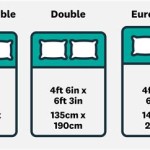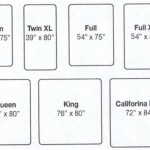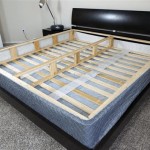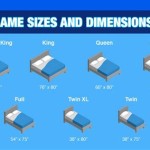Canopy Frames for Full-Size Beds: A Comprehensive Guide
Canopy beds, with their romantic and often luxurious aesthetic, have experienced a resurgence in popularity. At the heart of this bed style lies the canopy frame, a structure designed to support fabric drapes that cascade around the bed. While often associated with larger sizes, canopy frames are readily available for full-size beds, offering a touch of elegance and personalization to smaller sleeping spaces. Understanding the various types of canopy frames, materials, design considerations, and installation procedures can assist in making an informed purchasing decision.
Types of Canopy Frames for Full-Size Beds
The canopy frame market provides a range of options tailored to diverse decorative preferences and practical requirements. Distinguishing between these types allows for a targeted search that aligns with the desired aesthetic and functional needs.
Four-Poster Canopy Frames: This is arguably the most classic and recognizable style. Four vertical posts extend upwards from each corner of the bed, connected by horizontal rails forming a rectangular frame at the top. This structure provides complete support for draping fabric along all four sides, creating a fully enclosed and intimate sleeping space. Four-poster frames can be constructed from various materials, including metal, wood, or a combination thereof, influencing the overall style and perceived formality.
Half-Canopy Frames: Also known as a coronet canopy, this style offers a less encompassing design. Instead of four posts, a half-canopy frame typically utilizes a curved or rectangular support that attaches to the wall behind the headboard. Fabric is then draped from this support, creating a canopy effect primarily over the head and upper portion of the bed. Half-canopies are ideal for smaller rooms or for those seeking a more subtle canopy effect without the visual weight of a full four-poster frame.
Low-Profile Canopy Frames: Designed for modern aesthetics and spaces with limited ceiling height, low-profile canopy frames maintain the basic structure of four posts but with a significantly reduced height. The horizontal rails are positioned closer to the mattress, creating a more understated canopy effect. These frames often feature minimalist designs and are constructed from materials like sleek metal, avoiding excessive ornamentation that could overwhelm the smaller scale.
Freestanding Canopy Frames: Unlike frames that attach directly to the bed, freestanding canopy frames are independent structures that straddle the bed. These frames can be placed over an existing bed frame, making them a versatile option for those who want to add a canopy without replacing their current bed. Freestanding frames offer flexibility in terms of placement and can be easily moved if desired.
Platform Bed Compatible Canopy Frames: Platform beds do not require a box spring, resulting in a lower profile. Canopy frames designed for platform beds are specifically engineered to accommodate this lower height, ensuring proper proportions and visual harmony. These frames may feature shorter posts or adjustable components to achieve the desired canopy height.
Materials and Construction of Canopy Frames
The material composition of a canopy frame significantly impacts its durability, aesthetic appeal, and overall cost. A careful consideration of material options is crucial for selecting a frame that meets both functional and aesthetic requirements.
Metal Canopy Frames: Metal frames are known for their strength, durability, and clean lines. Steel and wrought iron are common choices, offering robust support for heavy fabrics. Metal frames can be finished in a variety of colors and textures, from classic black and white to more contemporary finishes like brushed nickel or gold. The minimalist design of many metal canopy frames makes them suitable for modern and industrial-inspired bedrooms.
Wood Canopy Frames: Wood frames impart a sense of warmth and traditional elegance. Hardwoods like oak, maple, and cherry are commonly used, providing both strength and aesthetic appeal. Wood frames can be stained or painted to complement existing bedroom furniture. The natural grain of the wood adds character and visual interest, making it a popular choice for traditional and rustic decorating styles.
Upholstered Canopy Frames: For a softer and more luxurious look, upholstered canopy frames feature fabric-covered posts and rails. This adds a layer of cushioning and texture, creating a more inviting and comfortable atmosphere. Upholstered frames are often paired with tufted headboards for a cohesive and opulent aesthetic. The choice of fabric greatly influences the overall style, ranging from plush velvet to crisp linen.
Combination Materials: Many canopy frames incorporate a combination of materials. For example, a metal frame might feature wooden accents on the posts or rails, blending the strength of metal with the warmth of wood. These hybrid designs offer versatility and can cater to a wider range of decorating styles.
Beyond the primary material, the quality of construction is paramount. Examine the joints and connections to ensure they are sturdy and well-secured. Welded joints on metal frames and mortise-and-tenon joints on wood frames are indicators of quality craftsmanship. A well-constructed canopy frame will provide years of reliable support and aesthetic enjoyment.
Design Considerations and Installation
Selecting the right canopy frame involves considering the overall design of the bedroom and ensuring proper installation for safety and stability. The frame should complement the existing décor and be appropriately sized for the full-size bed and the available space.
Style and Aesthetic: The canopy frame should align with the overall style of the bedroom. A minimalist metal frame is well-suited for a modern space, while an ornate wood frame might be more appropriate for a traditional or romantic bedroom. Consider the color palette and existing furniture to ensure a cohesive and harmonious design.
Fabric Selection: The choice of fabric for the canopy drapes significantly impacts the overall aesthetic. Sheer fabrics like voile or chiffon create a light and airy feel, while heavier fabrics like velvet or satin offer a more dramatic and opulent look. Consider the level of privacy and light control desired when selecting the fabric. The color and pattern of the fabric should complement the frame and the rest of the bedroom décor.
Room Size and Ceiling Height: Ensure that the canopy frame is appropriately sized for the room. A tall frame in a room with low ceilings can feel cramped and overwhelming. Measure the ceiling height and the dimensions of the bed to ensure that the frame will fit comfortably. In smaller rooms, a half-canopy or low-profile frame might be a better option than a full four-poster frame.
Lighting Considerations: Canopy beds can create a more enclosed and intimate sleeping space, which may require additional lighting. Consider incorporating string lights around the frame or installing sconces on the headboard to provide ample illumination. Ensure that the lighting is soft and ambient to create a relaxing and inviting atmosphere.
Installation Procedures: Proper installation is crucial for the safety and stability of the canopy frame. Follow the manufacturer's instructions carefully and ensure that all connections are securely fastened. If the frame attaches to the bed, make sure it is compatible with the existing bed frame. For freestanding frames, ensure that the legs are properly aligned and that the frame is stable. It may be beneficial to enlist the help of a professional installer, especially for more complex frames.
Maintenance and Care: Regular maintenance will help to keep the canopy frame looking its best. Dust the frame regularly with a soft cloth to prevent the buildup of dirt and grime. For metal frames, use a metal polish to maintain the shine. Wood frames can be cleaned with a furniture polish. Inspect the joints and connections periodically to ensure they are still secure. The fabric drapes should be laundered or dry-cleaned according to the manufacturer's instructions.
Beyond these core considerations, individuals might customize their full-size canopy bed frames further. Options include integrated headboards, footboards, or side rails for a more complete bed set. Further personalization comes from selecting the fabric for the canopy. The options are nearly limitless, ranging from simple mosquito netting for a light and breezy feel to heavy brocades for a regal appearance. Personal tastes and existing decor drive these decisions.
Ultimately, the purchase of a canopy frame for a full-size bed is a balance of practical and personal considerations. Understanding the variety of frame types, materials, and design elements will aid in the selection of a canopy frame that enhances the aesthetic appeal and functionality of any bedroom.

Ronse Canopy Bed Frame Wooden 2 Sizes Queen King

Urtr White Wood Frame Full Size Canopy Bed With Trundle Platform For Kids Teens Adults No Box Spring Needed T 01463 K The Home

Walcourt Canopy Bed Frame Wooden 2 Sizes Queen King

Boori Living Aus Lunar Canopy Bed Multi Sizes Pre Order

Reviews For Dhp Rory Metal Canopy White Full Size Bed Frame Pg 1 The Home

Homfa Full Size Upholstered Canopy Bed Frame For Bedroom 2 Storage Drawers Platform Curtain Not Included Pink
Oaklynn Canopy Bed Costco

Wooden Full Size Canopy Bed Frame Floor W Fence Guardrail Natural Toddlers

Homfa Full Size Upholstered Canopy Bed Frame For Bedroom 2 Storage Drawers Platform Curtain Not Included Beige

White Wood Full Size Kids House Bed Platform Singapore U








